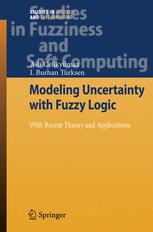

Most ebook files are in PDF format, so you can easily read them using various software such as Foxit Reader or directly on the Google Chrome browser.
Some ebook files are released by publishers in other formats such as .awz, .mobi, .epub, .fb2, etc. You may need to install specific software to read these formats on mobile/PC, such as Calibre.
Please read the tutorial at this link: https://ebookbell.com/faq
We offer FREE conversion to the popular formats you request; however, this may take some time. Therefore, right after payment, please email us, and we will try to provide the service as quickly as possible.
For some exceptional file formats or broken links (if any), please refrain from opening any disputes. Instead, email us first, and we will try to assist within a maximum of 6 hours.
EbookBell Team

4.3
68 reviewsThe objective of this book is to present an uncertainty modeling approach using a new type of fuzzy system model via "Fuzzy Functions". Since most researchers on fuzzy systems are more familiar with the standard fuzzy rule bases and their inference system structures, many standard tools of fuzzy system modeling approaches are reviewed to demonstrate the novelty of the structurally different fuzzy functions, before we introduced the new methodologies. To make the discussions more accessible, no special fuzzy logic and system modeling knowledge is assumed. Therefore, the book itself may be a reference for some related methodologies to most researchers on fuzzy systems analyses. For those readers, who have knowledge of essential fuzzy theories, Chapter 1, 2 should be treated as a review material. Advanced readers ought to be able to read chapters 3, 4 and 5 directly, where proposed methods are presented. Chapter 6 demonstrates experiments conducted on various datasets.